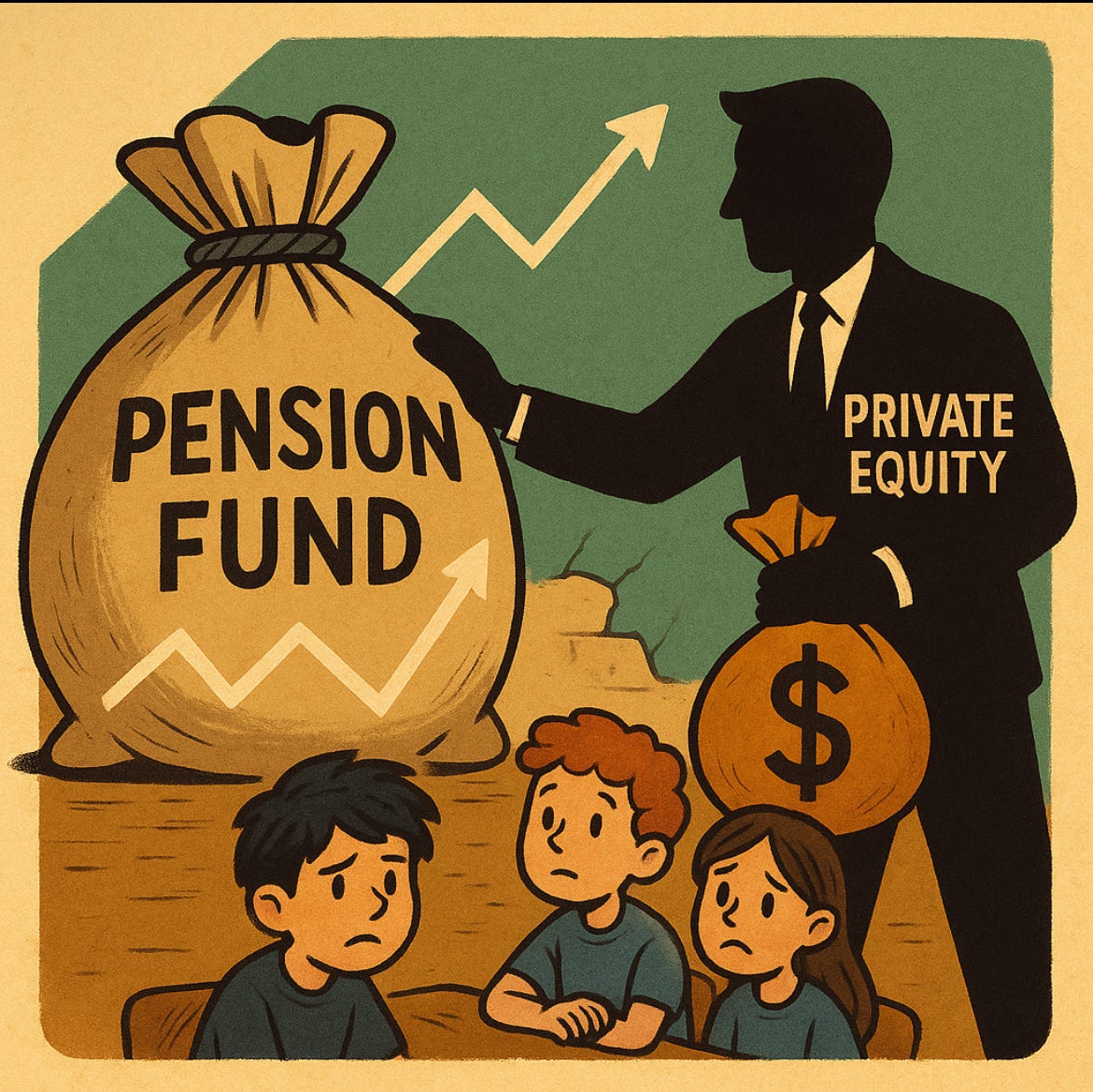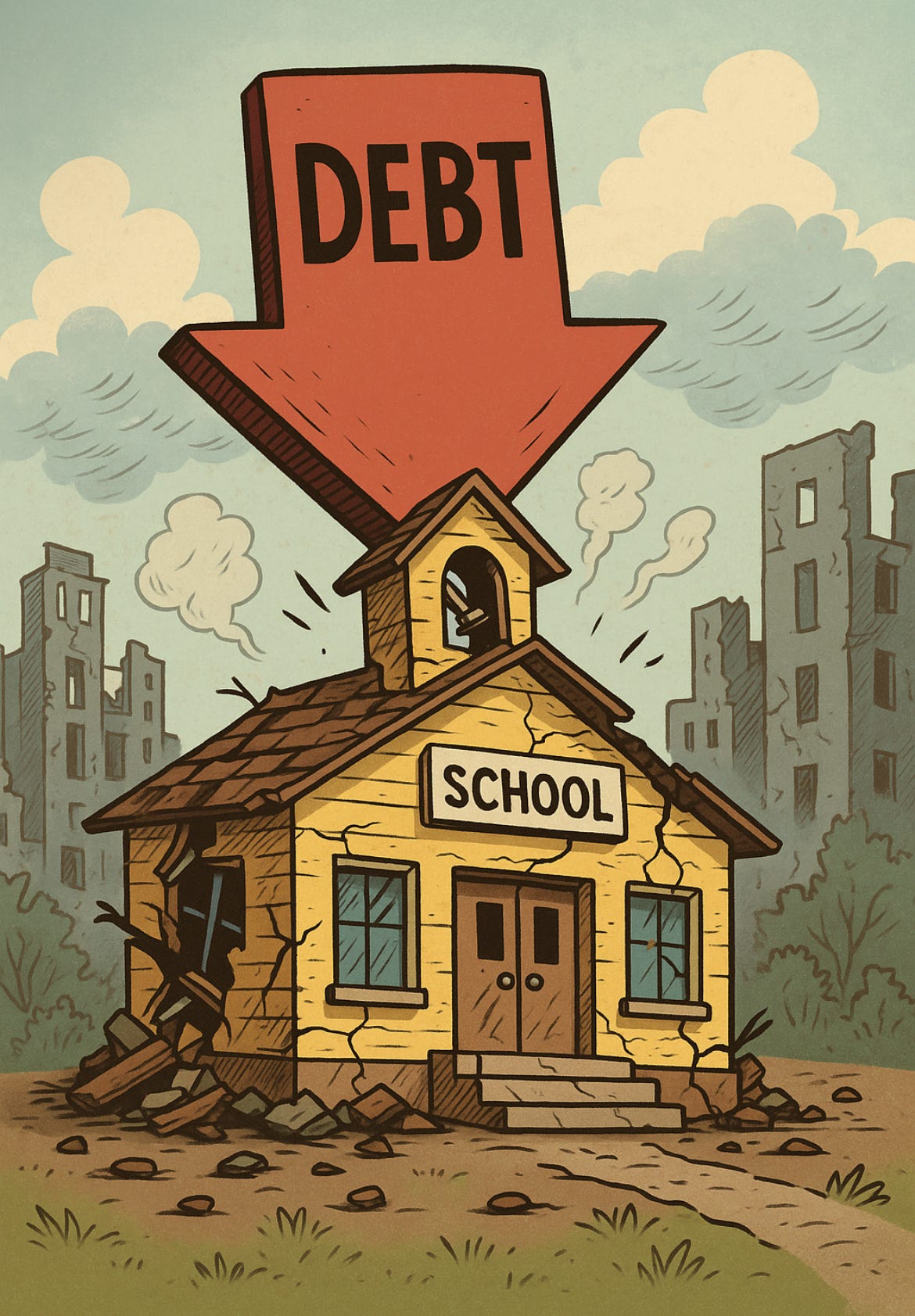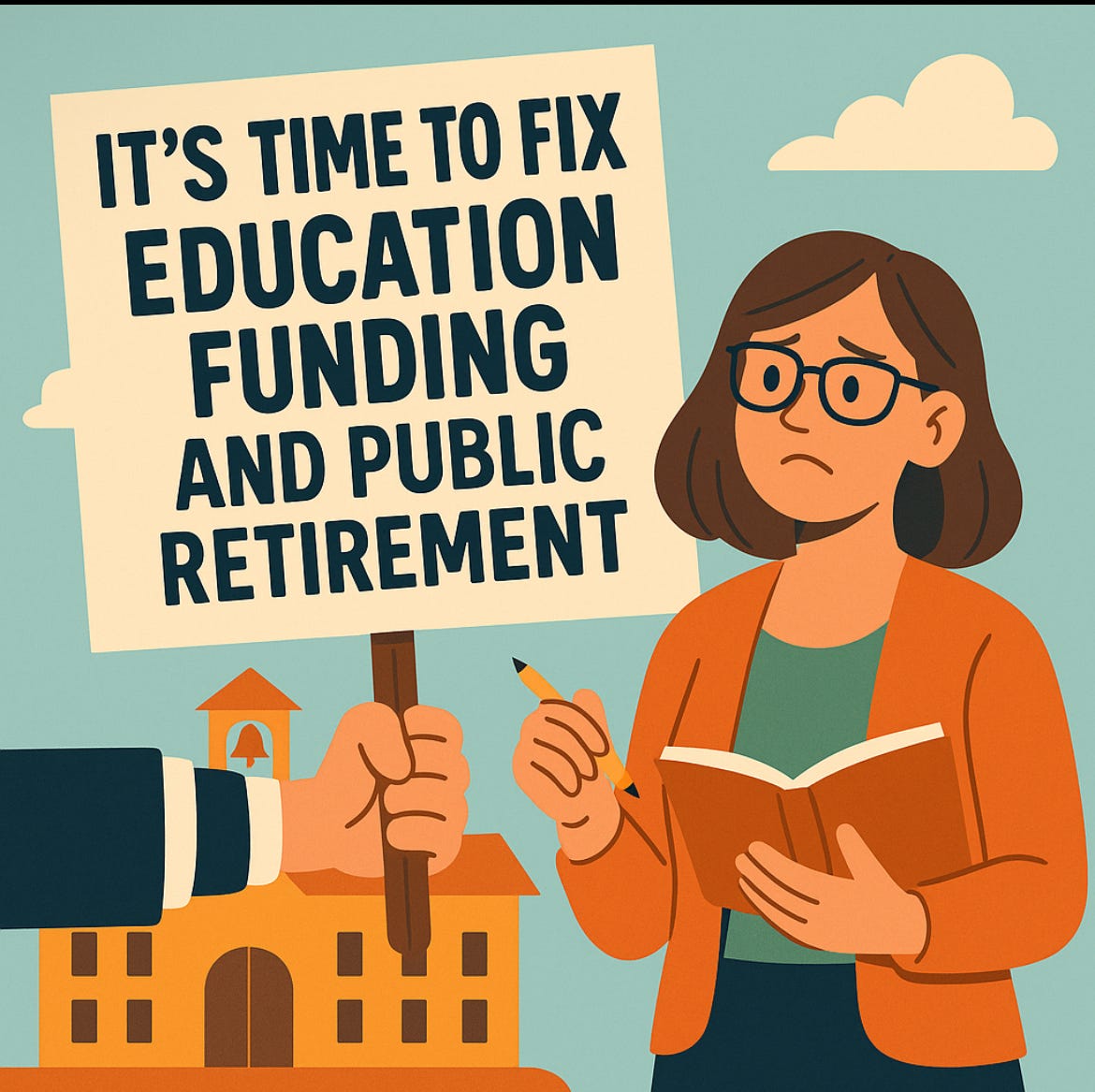The Silent Crisis in Oregon Education: How Pension Debt and Private Equity Are Costing Our Classrooms
It’s not just mismanagement. It’s Wall Street math and your school district is paying for it.
Schools across the country are facing tight budgets, and one of the biggest contributors, especially in Oregon, is PERS.
People love to talk about why Oregon’s Public Employees Retirement System is broken. And yes, there are real structural problems. But hardly anyone is talking about one of the major reasons pension funds across the U.S. are coming up short:
Back Floating Rate Loans.
These obscure, Wall Street-style financial tools are quietly exposing our public schools to the same kind of volatility that helped trigger the 2008 financial crisis.
What Are Back Floating Rate Loans? And Why Should We Care?
Back floating rate loans are a type of adjustable-rate loan. The interest rate isn’t fixed, it changes over time, usually tied to a benchmark like the Secured Overnight Financing Rate (SOFR).
So what happens when rates go up? Payments spike.
Sound familiar? These are the same kinds of financial instruments that helped tank the housing market in 2008. But instead of being tied to subprime mortgages, they’re now wrapped into pension obligations and school district budgets.
How Does This Work?
Let’s take Joann’s as an example.
Even though over 90% of Joann’s stores were profitable, the company filed for bankruptcy. Why? Because private equity firms had taken out back floating rate loans using companies like Joann’s as collateral. When interest rates rose, the loans came due and the companies were stripped for parts.
We’re seeing the same playbook with Bed Bath & Beyond, David’s Bridal, and dozens of other once-profitable chains.
Now here’s where it hits us
Those risky loans are often repackaged into Collateralized Loan Obligations (CLOs) and sold to pension funds, including public ones, like Oregon PERS.
Pension Funds, Private Equity, and Public Risk
Pension funds are supposed to be stable, long-term investments that support public employees in retirement. But in this new model, they’ve been exposed to high-risk loans labeled “safe” on paper but dangerously tied to the whims of private equity and interest rate fluctuations.
So when businesses fail or rates rise, these investments default, and our schools pay the price.
Oregon’s PERS system has tried to stabilize costs using side accounts and backloaded repayment plans. But these strategies often kick the can down the road. Districts still owe billions in unfunded liabilities and are increasingly vulnerable to financial market instability they can’t control.
What This Means for Your School
I used to wonder why, in a booming market, our pension funds weren’t performing as expected. Now I understand and unfortunately, it’s our school districts left holding the bag.
Here’s the hard truth, every dollar spent on rising pension debt service is a dollar not spent on kids. PERS is important because unlike GO bonds these funds come right out of the general fund.
And, if these funds had just been invested in VOO or any basic stock market index fund it would have returned an average of 16.31% over the last five years. But that’s not what happened.
Instead that means:
• Fewer teachers hired
• Bigger class sizes
• Cuts to electives, mental health support, and enrichment programs
• Stagnant wages for the very educators PERS was meant to support
And unlike other budget items, school boards can’t reduce PERS obligations. They’re legally locked in. So they’re forced to cut everywhere else.
It’s Time to Hold the State Accountable
Yes, Oregon has passed PERS reform bills, like Senate Bill 1049, but none have tackled the heart of the issue: how much of our education funding is siphoned off to cover decades-old promises and Wall Street speculation.
Lawmakers talk a big game about transparency. Want to impress us? Try transparency in PERS.
If the legislature truly wants to fund public education, they must:
• Increase transparency around how much is spent on PERS debt service versus direct classroom instruction
• Ban or restrict high-risk financial instruments like floating rate loans and CLOs in public pension portfolios
• Establish a state reserve to buffer school districts from sudden PERS cost spikes
• Rethink repayment structures and side accounts so they don’t outpace actual classroom needs
Closing: Let’s Talk About What’s Really Draining Education
I didn’t get into education advocacy to talk about pension math, but here we are.
If we’re serious about supporting teachers, protecting kids, and reforming public education, we need to face the hard truth about how we fund retirement and how that’s undermining the future of our classrooms.
Let’s keep this conversation going.
📩 Subscribe to follow future posts where I’ll break down more of Oregon’s education finance puzzle, from legislation and lobbying to real-world school impacts. And if you’re a policymaker, parent, or educator who’s seen how PERS debt affects your district, I want to hear from you.







